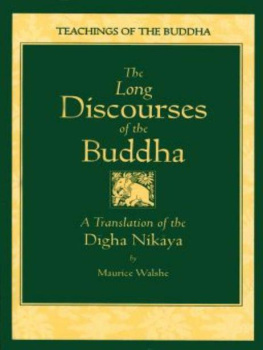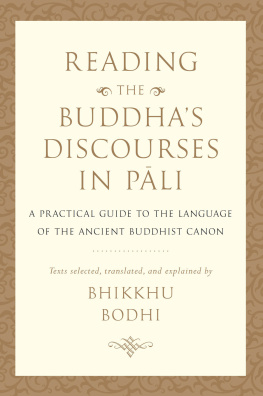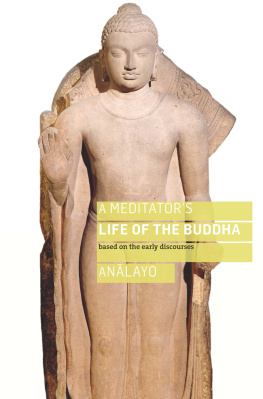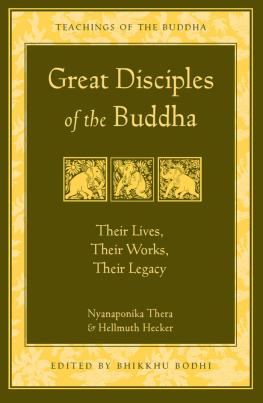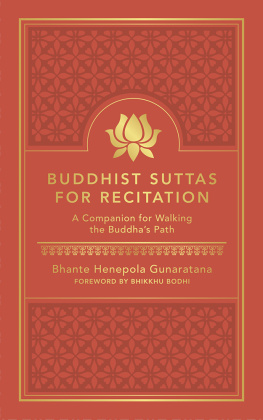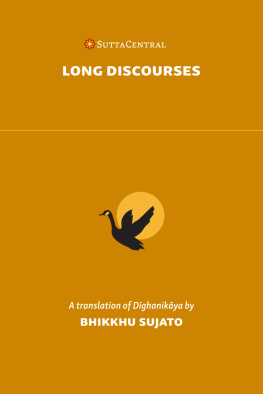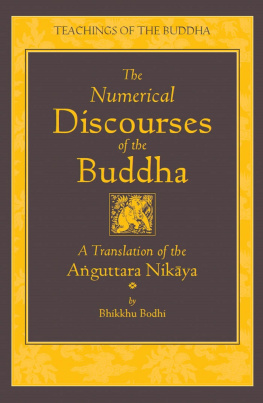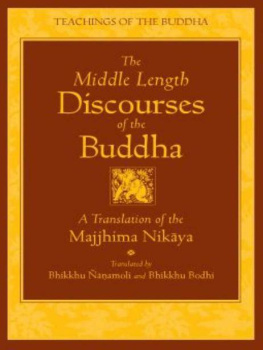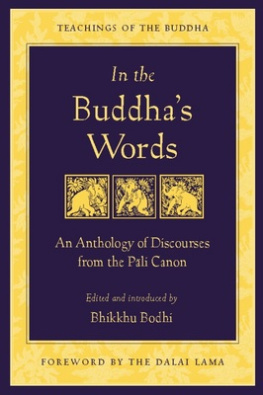Table of Contents
To the Sangha
East and West
india at the time of the buddha
List of Illustrations
Map of India at the time of the Buddha, drawn by C.R. Shaw, Totnes, Devon, 1986. 6
The road between Rjagaha and Nland, drawn by Pang Chinasai, London, 1986. 66
Statue of Buddha Sakyamuni, Burma, 18th century. By courtesy of the trustees of the Victoria and Albert Museum (LM. 65-1912). 110
Flying monk, from a Thai paper folding-book, about mid-19th century. By permission of the British Library (OR 13703 f20). 150
The past Buddhas, drawn by Pang Chinasai, London, 1986. 198
Monk in meditation, from a Thai paper folding-book, about mid-19th century. By permission of the British Library (OR 13703 f45). 222
Statue of Buddha Sakyamuni, Burma, possibly 17th century. By courtesy of the trustees of the Victoria and Albert Museum (I.S. 21 & A.-1970)- 278
Deva, from a Thai paper folding-book with coloured paintings, 1830-40. By permission of the British Library (ADD 15347 f48). 314
The Charlatan, drawn by Pang Chinasai, London, 1987. 370 Statue of Sariputta, Burma, about 1850. By courtesy of the trustees of the Victoria and Albert Museum (I.S. 11 (22)-1969). 416
The Four Great Kings, from Buddhist Cosmology, Thonburi Version, 1982. Fine Art Department of Bangkok, Thailand. 470
Monk, from a Thai paper folding-book, about mid-19th century. By permission of the British Library (OR 13703 f17). 524
Monk preaching to laity, from a Thai manuscript, 1868. By permission of the British Library (OR 6630 f71). 626
Foreword
It is with much pleasure that I write this brief foreword to Mr Walshes translation of the Dgha Nikya. The translator is a devout Buddhist whose Pali scholarship is backed up by personal practice of meditation. His translation work is therefore a most important contribution to the study of Buddhism.
Mr Walshe has been active in the Buddhist world of Great Britain for many years. Long before I came to Britain, his name was known to me through his essays in The Wheel series of the Buddhist Publication Society of Sri Lanka. In 1977 my venerable teacher, Tan Ajahn Chah Subhatto and I arrived in London at the invitation of the English Sangha Trust of which Mr Walshe was one of the Trustees. This Trust had been established in 1956 in order to bring about a Western Sangha in Britain, and towards this end, Mr Walshe has consistently worked for nearly thirty years. At one time he combined this with the post of Vice-President of the Buddhist Society of Great Britain, his career at the Institute of Germanic Studies in London University (of which his translations of the sermons of Meister Eckhart are a testimonial), as well as studying Pali in his spare time.
Even though Pali scholars have produced quite accurate literal translations of the Pali Canon, one often feels the lack of profound insight into these remarkable scriptures. The Suttas need to be studied, reflected on, and practised in order to realise their true meaning. They are Dhamma discourses, or contemplations on the way things are. They are not meant to be sacred scriptures which tell us what to believe. One should read them, listen to them, think about them, contemplate them, and investigate the present reality, the present experience with them. Then, and only then, can one insightfully know the Truth beyond words.
In this new translation of the long discourses Mr Walshe has kindly offered us another opportunity to read and reflect on the Buddhas teachings.
May all those who read them, benefit and develop in their practice of the Dhamma.
May all beings be freed from all suffering.
May all beings be enlightened.
VENERABLE SUMEDHO THERA
Amaravati
Great Gaddesden
Hertfordshire
England
January 1986
Preface
The two main reasons for making this translation of some of the oldest Buddhist scriptures are: (1) The spread of Buddhism as a serious way of life in the Western world, and of even more widespread serious interest in it as a subject worthy of close study, and (2) the fact that English is now effectively the world language, the most widespread linguistic vehicle for all forms of communication. True, the Pali scriptures have already been translated in almost their entirety into English, mainly through the devoted efforts of the Pali Text Society, which has now entered into the second century of its activity. But existing translations are now dated stylistically as well as containing many errors and a modem version has therefore become necessary.
First, and foremost, the entire merit for this translation belongs to the Venerable Balangoda nandamaitreya Mah Nyaka Thera, Aggamahpaita (though he has, of course, no need of such pua) for having convinced me that I could, and therefore of course should, undertake this task. To me there remains merely the demerit of its many imperfections. Working on it has provided me with much joy, solace and illumination.
My particular thanks for help and encouragement are due, besides the illustrious and (in all senses) venerable gentleman just mentioned, to the Ven. Dr H. Saddhtissa, a friend of many years standing from whom I have learnt so much, the Ven. Nyaponika who inspired an earlier, more modest venture in translation, the Ven. Dr W. Rahula who guided my early, faltering steps in Pali, as well as the Ven. P. Vipassi and Messrs K.R. Norman and L.S. Cousins, whose collective brains I have picked on knotty points. It is fitting also to pay tribute here to the Ven. Achaan Cha (Bodhia Thera) and his illustrious pupil Achaan Sumedho, whose efforts in establishing a flourishing branch of the Sangha in Britain have made such translation work all the more necessary; and others please note! much remains to be done in this field.
My principles of translation are briefly discussed in the Introduction. I am aware of a few trifling inconsistencies as well as a few repetitions in the notes. The former will, I think, cause no inconvenience: they were hard to avoid altogether in this, quite possibly the last, translation these scriptures will receive without benefit of electronic gadgetry. And as for the repetitions, these can perhaps be overlooked in connection with a text which is itself so repetitious.
My sincere thanks are due to Wisdom Publications for producing this book so splendidly, and to the Buddhist Society of Great Britain for a generous donation towards costs.
MAURICE WALSHE
St Albans
Hertfordshire
England
January 1986
Technical Notes
This book is in three parts: Division One, containing Suttas 1-13; Division Two, containing Suttas 14-23; Division Three, containing Suttas 24 34.
The Suttas are divided into verses and, in some cases, into sections as well. The verse and section numbers are based on Rhys Davidss system. Thus, Sutta 16, verse 2.25 denotes Sutta 16, chapter or section 2, verse 25. For the sake of brevity this appears in the notes as DN 16.2.25 and in the index as 16.2.25.
The numbers at the top of the page, for example i 123, refer to the volume and page number of the Pali Text Societys edition in Pali. Thus, i 123 refers to volume one, page 123 of the Dgha Nikya. The numbers in square brackets in the actual text also refer to these page numbers.
In this edition any passage can easily be looked up by either method.

